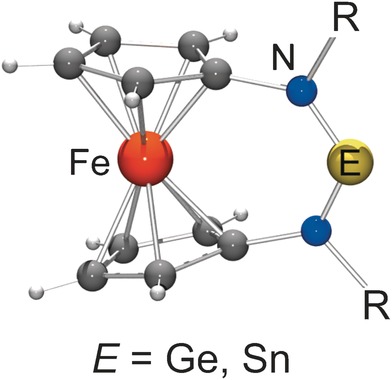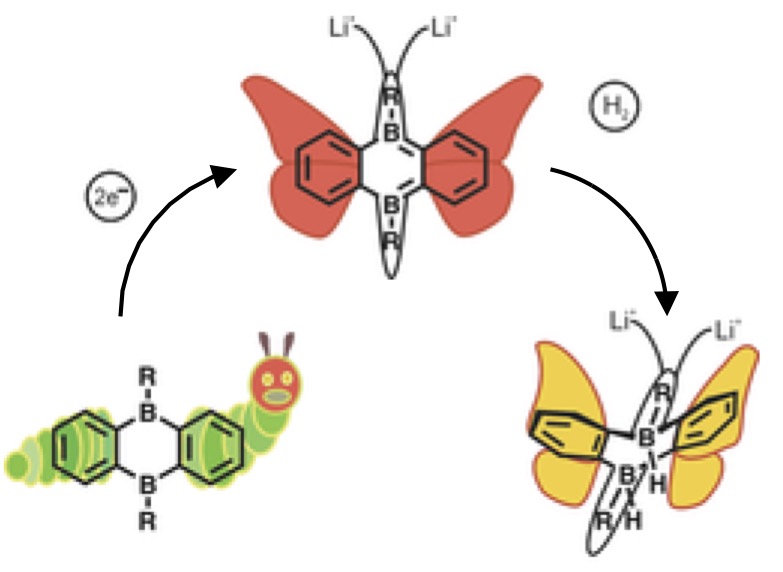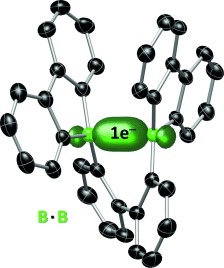Redox‐Active N‐Heterocyclic Germylenes and Stannylenes with a Ferrocene‐1,1′‐diyl Backbone
Be positive, tetrylene! N‐heterocyclic germylenes and stannylenes with a ferrocenylene backbone are described, which are the first examples of redox‐functionalised N‐heterocyclic terylenes (see figure). Consistent with the strongly localised nature of the HOMO, the oxidation process is ferrocene based. The ferrocenium‐type nature of the resulting cation does not compromise the fundamental tetrylene character of these species, thus opening the door to a reversible umpolung of their electronic profile by redox switching.
Chem. Eur. J. 23, 1187–1199 (2017)
in cooperation with Prof. Siemeling (Kassel)

Reversible Dihydrogen Activation by Reduced Aryl Boranes as Main-Group Ambiphiles
Borane metamorphosis: The injection of two electrons transformed the ditopic Lewis acid diboraanthracene into a main-group ambiphile (MGA) that activated H2 much as a transition metal would. The H2 molecule underwent selective addition across the two boron atoms, and the resulting hydridoborate could be used as a hydride-transfer reagent.
Angew. Chem. Int. Ed. 55, 14067–14071 (2016)
in cooperation with Prof. Wagner (Frankfurt)

Confirmed by X-ray crystallography: The B•B one-electron σ bond
One is enough: The first structurally characterized radical anion containing a B⋅B one-electron σ bond shows a significantly shorter B⋅⋅⋅B distance than the uncharged starting material, while the boron centers largely maintain their local planarity.
Angew. Chem. Int. Ed. 53, 4832–4835 (2014); Highlighted as “Very Important Paper”
in cooperation with Prof. Wagner (Frankfurt)

Diastereoselective synthesis of a bicyclic β-lactam with penicillin G-like spectrum of activity by carbonylation of an acyclic diaminocarbene
Diisopropylamino-cis-2,6-dimethylpiperidinocarbene reacts regio- and diastereoselectively with CO to afford a bicyclic β-lactam with 100% atom efficiency, whose spectrum of activity resembles that of penicillin G or amoxicillin.
Chem. Commun. 50, 2341–2343 (2014)
in cooperation with Prof. Siemeling (Kassel), Prof. Bandow (Bochum), and Prof. Schneider (Bonn)

